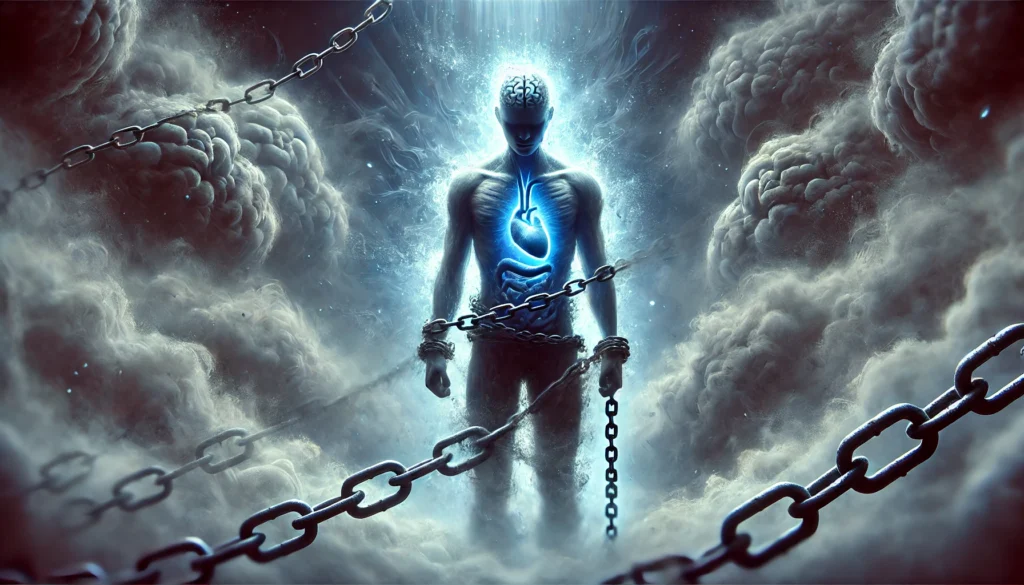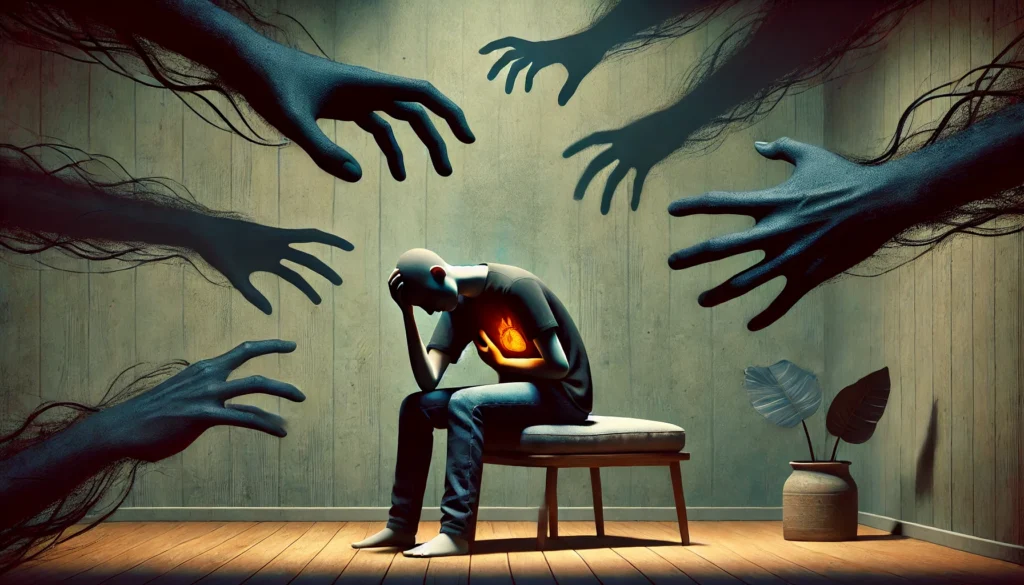Understanding Seasonal Affective Disorder and Its Impact
As the days grow shorter and the winter months take hold, millions of people experience a shift in their mood and energy levels. This phenomenon, known as Seasonal Affective Disorder (SAD), is a type of depression that follows a seasonal pattern, typically emerging in late autumn and persisting through winter. Individuals affected by SAD often report symptoms such as persistent sadness, fatigue, difficulty concentrating, and disruptions in sleep and appetite. While the exact cause of SAD is not fully understood, researchers believe it is linked to reduced exposure to natural sunlight, which affects circadian rhythms and the production of mood-regulating neurotransmitters like serotonin and melatonin.
You may also like: Best Herbs for Anxiety and Depression: Natural Remedies That Truly Work
SAD is more than just the “winter blues”; it is a clinically recognized disorder that can significantly impact an individual’s well-being and quality of life. For those struggling with SAD, everyday activities may become burdensome, and the lack of motivation and energy can interfere with work, relationships, and overall happiness. Understanding the science behind SAD is the first step in exploring effective treatments, with seasonal affective disorder light therapy emerging as a leading non-pharmacological intervention.
The Science Behind Light Therapy for Seasonal Affective Disorder
Light therapy for seasonal affective disorder is based on the principle that exposure to bright light can compensate for the lack of natural sunlight during the winter months. The human body relies on natural light to regulate its internal clock, or circadian rhythm, which influences sleep, hormone production, and mood. When natural light exposure is limited, as it is in winter, the body’s internal processes can become disrupted, leading to the onset of SAD symptoms.
Seasonal light therapy works by delivering a concentrated dose of bright, artificial light that mimics natural sunlight. This exposure helps to reset the body’s biological clock, promoting the production of serotonin while suppressing excessive melatonin levels. Research indicates that light therapy can be highly effective, with many individuals experiencing significant improvements in mood and energy levels within just a few days of consistent use. However, to maximize benefits, it is essential to use the correct type of light therapy device and adhere to recommended guidelines for exposure duration and intensity.
Choosing the Right Seasonal Light Therapy Device
Not all light therapy devices are created equal, and selecting the right one is crucial for achieving optimal results. A high-quality seasonal affective disorder light therapy lamp should emit a brightness level of at least 10,000 lux, as this intensity closely resembles natural daylight. Additionally, the light should be full-spectrum but free from harmful ultraviolet (UV) rays to prevent potential eye damage or skin irritation.
Several types of SAD phototherapy lamps are available on the market, each with unique features designed to accommodate different user preferences. Some models are compact and portable, making them ideal for individuals who travel frequently, while others are designed for stationary use at home or in the workplace. Adjustable brightness settings, built-in timers, and glare-reducing diffusers are additional features that enhance user experience and effectiveness. When selecting a lamp for winter depression, individuals should consider factors such as light intensity, size, and ease of use to ensure consistent adherence to therapy sessions.
How to Use Light Therapy for Seasonal Affective Disorder Effectively
To achieve the best results with seasonal light therapy, proper usage is essential. Experts recommend using a seasonal depression light therapy lamp for 20 to 30 minutes each morning, preferably within the first hour of waking. Positioning is also important—the light should be placed at eye level, about 16 to 24 inches away from the face, to ensure optimal absorption without direct glare.
Consistency is key when using light therapy for winter blues. While some individuals notice improvements within a few days, others may require several weeks of regular use before experiencing full benefits. It is crucial to integrate light therapy into a daily routine, much like any other self-care practice, to maintain its effectiveness. Additionally, those with pre-existing eye conditions or sensitivities should consult a healthcare professional before starting therapy to ensure it is safe for their individual needs.

The Benefits and Effectiveness of Light Therapy for SAD
Numerous studies have demonstrated that SAD light treatment can be just as effective as antidepressant medications for many individuals. Unlike pharmaceutical interventions, light therapy has minimal side effects, making it an appealing option for those seeking a non-invasive and natural approach to managing seasonal depression. Common benefits reported by users include improved mood, increased energy levels, enhanced concentration, and better sleep patterns.
In addition to its effectiveness in treating SAD, seasonal light therapy has also shown promise in alleviating symptoms of other mood disorders, such as non-seasonal depression and bipolar disorder. Some research suggests that light therapy may also help regulate sleep cycles in individuals with circadian rhythm disorders, making it a versatile tool for overall mental health and well-being.
Do Sun Lamps Help with Seasonal Depression? Understanding the Differences
One common question that arises when discussing light therapy is whether standard sun lamps or UV lamps can provide the same benefits as SAD light treatment. The answer lies in the type of light emitted. Traditional sun lamps are designed primarily for skin-related conditions, such as vitamin D deficiency or psoriasis treatment, and they emit UV rays that can be harmful with prolonged exposure.
In contrast, seasonal light therapy lamps are specifically engineered to provide bright, UV-free light that mimics natural sunlight without the associated risks. Using a properly designed seasonal light therapy lamp ensures safety while effectively targeting the underlying causes of SAD. It is important for individuals to select a light therapy device that has been clinically tested and recommended for mental health applications to achieve the best outcomes.
Incorporating Light Therapy into a Holistic Treatment Plan
While seasonal light therapy is a powerful tool for managing SAD, it is most effective when used in conjunction with other lifestyle strategies. Regular physical activity, a balanced diet rich in mood-boosting nutrients, and mindfulness practices such as meditation can complement light therapy and further enhance mental well-being. Social engagement and spending time outdoors, even on cloudy days, can also contribute to improved mood and reduced SAD symptoms.
For individuals with moderate to severe SAD, a combination of light therapy and professional mental health support, such as cognitive-behavioral therapy (CBT) or medication, may be necessary. Consulting with a healthcare provider can help determine the most appropriate treatment plan tailored to individual needs and circumstances.

Frequently Asked Questions (FAQ) About Seasonal Light Therapy
1. How does seasonal affective disorder light therapy compare to traditional antidepressants?
Seasonal affective disorder light therapy offers a non-pharmacological approach to managing SAD, making it an attractive alternative for those who wish to avoid medication. Unlike antidepressants, which take weeks to become fully effective and may have side effects such as weight gain or drowsiness, light therapy can produce noticeable improvements within days. Studies suggest that for many individuals, seasonal light therapy is as effective as medication, particularly for those experiencing mild to moderate symptoms. Additionally, light therapy works by addressing the root cause of SAD—reduced sunlight exposure—whereas antidepressants mainly target neurotransmitter imbalances without addressing environmental factors. However, individuals with severe SAD may benefit from a combination of seasonal affective disorder light therapy and medication for a comprehensive treatment plan.
2. Can light therapy for seasonal affective be used in combination with vitamin D supplements?
Yes, combining light therapy for seasonal affective disorder with vitamin D supplements can be beneficial, as both target the effects of reduced sunlight exposure. Vitamin D deficiency has been linked to depressive symptoms, and many individuals with SAD have lower levels of this essential nutrient. While seasonal depression light therapy helps regulate melatonin and serotonin production, it does not increase vitamin D levels, as most SAD lamps do not emit UVB light. Therefore, taking vitamin D supplements alongside light therapy may help address both biochemical and circadian disruptions caused by limited sun exposure. Consulting a healthcare provider can help determine the optimal dosage of vitamin D to complement seasonal light therapy.
3. What time of day is best for using a lamp for winter depression?
The optimal time to use a lamp for winter depression is in the morning, shortly after waking up. Exposure to bright light early in the day helps reset the body’s internal clock, reinforcing a healthy sleep-wake cycle and boosting energy levels. Using a sad phototherapy lamp too late in the day may interfere with melatonin production, leading to difficulties falling asleep at night. Some individuals may experiment with afternoon sessions, particularly if they experience an energy slump in the early evening, but caution should be taken to avoid disrupting sleep. Consistency is key—using seasonal depression light therapy at the same time each day enhances its effectiveness in alleviating symptoms.
4. Does light therapy work for seasonal depression in individuals with other mood disorders?
While light therapy is primarily used for SAD, research indicates that it can also benefit individuals with non-seasonal depression, bipolar disorder, and certain circadian rhythm disorders. The mechanism behind light therapy—regulating serotonin and melatonin—plays a crucial role in mood stabilization, making it a potential adjunct therapy for other mental health conditions. However, individuals with bipolar disorder should use sad light treatment cautiously, as excessive exposure may trigger manic episodes. Consulting a mental health professional before starting seasonal light therapy ensures that it is used safely and effectively in conjunction with other treatments.
5. Are there any potential side effects of using a sad seasonal light therapy lamp?
Most individuals tolerate sad seasonal light therapy well, but some may experience mild side effects, particularly during the initial days of use. These can include eyestrain, headaches, nausea, or jitteriness, often due to excessive brightness or prolonged exposure. Adjusting the duration or positioning of the lamp for winter depression can help minimize discomfort. Individuals with light sensitivity, migraines, or retinal conditions should consult an eye specialist before starting seasonal light therapy. If persistent side effects occur, reducing the intensity of exposure or switching to a lower-lux lamp may improve tolerance.
6. Do sun lamps help with seasonal depression, or do I need a specialized SAD lamp?
Standard sun lamps, which are designed for skin conditions or vitamin D production, do not provide the same benefits as seasonal depression light therapy. SAD lamps emit bright, UV-free light at an intensity of at least 10,000 lux, mimicking natural daylight to regulate mood and sleep cycles. In contrast, sun lamps often emit UV rays, which can be harmful to the eyes and skin when used improperly. To ensure effectiveness and safety, individuals should select a device specifically designed for sad light treatment and avoid UV-emitting lamps meant for dermatological purposes.
7. Can seasonal light therapy be used to improve sleep disorders?
Yes, seasonal light therapy can help regulate sleep disorders linked to circadian rhythm disruptions, such as delayed sleep phase syndrome and shift work disorder. Exposure to bright light in the morning signals to the brain that it is time to be awake, reinforcing a stable sleep-wake cycle. For those struggling with insomnia or irregular sleep patterns, combining light therapy for winter blues with good sleep hygiene—such as maintaining a consistent bedtime and reducing screen time before bed—can enhance results. Individuals experiencing chronic sleep disturbances should seek medical advice to determine whether light therapy is an appropriate solution for their specific condition.
8. How long does it take for sad phototherapy to show results?
Many individuals begin to notice improvements within a few days to a week of starting sad phototherapy, though full benefits may take two to four weeks to develop. The speed of response depends on factors such as the severity of symptoms, consistency of use, and individual biological differences. Those who see minimal improvement after four weeks should assess whether their device meets recommended brightness levels or if adjustments in exposure duration are necessary. Consulting a healthcare professional can help determine whether additional interventions, such as therapy or medication, should be incorporated alongside seasonal light therapy.
9. Can I use seasonal affective disorder light therapy if I spend a lot of time outdoors?
Spending time outdoors, even on cloudy days, can provide natural light exposure, reducing the need for seasonal affective disorder light therapy. However, for individuals living in regions with long winters and limited daylight, outdoor exposure may not be sufficient to counteract SAD symptoms. On particularly dark or overcast days, supplementing natural sunlight with a seasonal light therapy lamp can ensure adequate light intake. Additionally, those who have work schedules that limit outdoor time may still benefit from incorporating light therapy for seasonal affective into their routine, even if they get some daylight exposure.
10. Is seasonal light therapy safe for children and teenagers?
Seasonal light therapy is generally considered safe for children and teenagers, but it should be used under the guidance of a healthcare professional. Young individuals experiencing symptoms of SAD or difficulty waking up during winter months may benefit from exposure to a sad disease light. The duration and intensity should be adjusted based on age, sensitivity, and individual needs to prevent overstimulation or discomfort. Encouraging a balanced approach that includes outdoor activities, proper nutrition, and good sleep habits can further support mood and well-being in younger individuals. Before starting sad light treatment for a child or teenager, consulting a pediatrician or mental health specialist ensures appropriate use and monitoring.
These frequently asked questions provide deeper insights into seasonal light therapy, its applications, and considerations for safe and effective use. By understanding the nuances of SAD phototherapy, individuals can make informed decisions about incorporating light therapy into their wellness routines.

Final Thoughts on Light Therapy for Seasonal Depression
As awareness of SAD and its effects continues to grow, more individuals are turning to light therapy as a safe and effective solution for managing winter depression. With the right approach, seasonal light therapy can restore balance to the body’s internal rhythms, alleviate depressive symptoms, and improve overall well-being. By integrating light therapy into a comprehensive self-care routine, those affected by SAD can reclaim their vitality and enjoy the winter months with renewed energy and optimism.
As research in the field of phototherapy advances, the future of SAD treatment looks promising. With ongoing innovations in light therapy technology and a growing understanding of its mechanisms, individuals struggling with seasonal depression have more resources than ever to take control of their mental health. Whether used alone or as part of a broader wellness plan, seasonal light therapy remains a beacon of hope for those seeking relief from the winter blues.
light therapy benefits, circadian rhythm balance, phototherapy for depression, bright light exposure, mood enhancement therapy, winter mental health solutions, non-drug depression treatment, sunlight deficiency remedies, artificial light therapy, serotonin and melatonin regulation, holistic depression management, effective SAD treatments, mental health and lighting, UV-free therapy lamps, daylight simulation therapy, indoor light exposure, combating winter lethargy, morning light therapy, seasonal mood support, energy-boosting light therapy
Further Reading:
Bright Light Therapy: Seasonal Affective Disorder and Beyond
Light therapy: Not just for seasonal depression?
How Does Light Therapy Treat Depression?
Disclaimer
The information contained in this article is provided for general informational purposes only and is not intended to serve as medical, legal, or professional advice. While Health11News strives to present accurate, up-to-date, and reliable content, no warranty or guarantee, expressed or implied, is made regarding the completeness, accuracy, or adequacy of the information provided. Readers are strongly advised to seek the guidance of a qualified healthcare provider or other relevant professionals before acting on any information contained in this article. Health11News, its authors, editors, and contributors expressly disclaim any liability for any damages, losses, or consequences arising directly or indirectly from the use, interpretation, or reliance on any information presented herein. The views and opinions expressed in this article are those of the author(s) and do not necessarily reflect the official policies or positions of Health11News.


